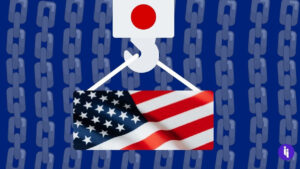This week is kinda like the Super Bowl for finance nerds, as several central banks issue decisions on what to do with interest rates.
So here are some quick primers on what to expect.
The US Fed is up first with its highly-anticipated rate cut due tomorrow (Wednesday). It’s been widely telegraphed, but its size and any accompanying banter from Fed chair Jerome Powell and his board will still bring buzz:
Stay on top of your world from inside your inbox.
Subscribe for free today and receive way much more insights.
Trusted by 114,000+ subscribers
No spam. No noise. Unsubscribe any time.
- Background: Borrowing costs are currently at a 23-year high (5.25-5.5%), and any cuts will be the first in four years after they dropped near zero when Covid hit.
- Powell has said the Fed’s moves are now based on “the data, the outlook and the balance of risks”, so the recent weaker jobs reports and uptick in unemployment are all making a rate cut inevitable at this point.
- Market reaction:Markets suggest there’s a 63% chance of a big half-point cut and a 37% chance of a standard quarter-point cut. That’s sent the Dow Jones to a record high, as traders expect cheaper borrowing to make it easier for folks to get out there and spend and invest. But they’ll also pour over Powell’s every word for any hint he’s worried about the economy, particularly if he opts for the bigger half-point cut.
Then Brazil’s central bank wraps up its two-day meeting the same day:
- Background: Brazil paused its cuts earlier this year, and it’s now set to hike rates for the first time in 3.5 years, kinda bucking the trend playing out elsewhere.
- That’s because Brazil just posted surprisingly strong growth, so folks are betting on more hikes (from 10.5% now to 11.25% by year end) to curb inflation.
- Market reaction:Traders watch not just the numbers here, but also the personalities – President Lula has long been in a public spat with the bank’s hawkish chair, who was appointed by Lula’s predecessor and has warned that Brazil still has an inflation problem.
Then on Thursday, it’s Norway, Turkey and the UK’s turn, with markets not expecting any changes:
- In Oslo, rates are already at a 16-year high (4.5%), and the bank’s mid-August meeting suggested it’s happy to keep things that way while inflation persists
- In London, rates seem likely to hold at 5% after last month’s cut, given services and wage inflation are still up, and
- In Ankara, rates should stay at 50% (!) given inflation is still over 50% (!).
- Market reaction: Expect a tizz if there is a change, as markets don’t like surprises. Unexpected cuts can spook folks, by signalling that central banks are worried.
Meanwhile, South Africa’s central bank is meeting the same day (Thursday):
- Background: Like the US, it’s set for a pivot, cutting rates for the first time since Covid – ie, the bank is likely switching from hose-down mode to support mode.
- Market reaction: It’s no coincidence South Africa (like the others above) has timed its meeting for right after the US – emerging markets in particular worry that if their rates get out of sync, capital can flee in search of higher US returns.
And to round things out on Friday,there’s the Bank of Japan:
- Tokyo is expected to maintain rates at 0.25%, but folks will hang on Governor Ueda’s every word given the weight of Japan’s economy, its legacy of ultra-low rates, and its move earlier this year to raise rates for the first time in 17 years.
So there may be fewer beers, buffalo wings and bars involved, but this week’s central bank Super Bowl is still well worth watching.
INTRIGUE’S TAKE
Sure, everyone’s expecting the Fed to cut, but that doesn’t make the coming months any clearer:
- Cut too fast, and you risk asset bubbles, or
- Cut too slow, and you risk a recession.
So you gotta cut just right. How? For years, many central bankers were guided by the Brainard principle (from the Yale economist in 1967): if you’re uncertain, go slow.
But in the decades since then, we’ve learned that sometimes going slow just makes the problem worse, and renders your eventual course correction less effective.
That’s partly why markets are expecting Powell to go medium-hard (0.50%) and then choose his words very carefully.
Also worth noting:
- Donald Trump has said the Fed shouldn’t cut rates before the November election, while some fellow Republicans are disagreeing and calling for the Fed to cut given signs of a slowdown. Meanwhile, some Democratic senators just wrote a letter calling on the Fed to cut even faster (0.75%).
- The European Central Bank cut rates again last week.









